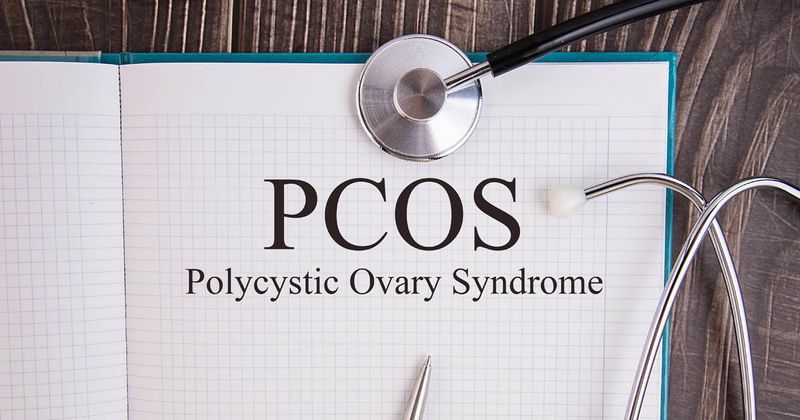PCOS blunts follicle-stimulating hormone increase after use of triptorelin during IVF
Women with polycystic ovary syndrome have less increase in follicle-stimulating hormone after triptorelin administration during in vitro fertilization than women without PCOS, according to data from two studies.
“[Gonadotropin-releasing hormone receptor agonists] are commonly used in IVF treatment as the trigger of oocyte maturation by increasing luteinizing hormone and follicle-stimulating hormone (FSH) levels,” Ali Abbara, PhD, clinical senior lecturer in diabetes and endocrinology at Imperial College London, told Healio. “In women without ovarian stimulation, we found that the FSH rise after triptorelin was lower in women with PCOS than in healthy women or in women with hypothalamic amenorrhea. We found that the rise in FSH was negatively related to anti-Müllerian hormone, which is a marker that reflects ovarian reserve and is higher in women with PCOS.”

Abbara and colleagues conducted two studies to examine serum gonadotropin response to triptorelin. In the first study, researchers conducted a single-masked placebo-controlled trial with nine healthy eumenorrheic women, six women with PCOS and six women with hypothalamic amenorrhea. Participants were aged 18 to 35 years with regular menstrual cycles, a BMI of 18 kg/m2 to 30 kg/m2 and not taking medications or hormonal contraception. During day 1 to day 4 of the early follicular phase of the menstrual cycle, participants received a subcutaneous bolus of 0.2 mg triptorelin or placebo after a spontaneous or induced menstrual bleed. The administration of triptorelin or saline was performed in a randomized order, with one study visit taking place during each menstrual cycle. Blood samples were collected 30 minutes before administration, just prior to administration, at 5, 15 and 30 minutes after administration and then every 30 minutes for 10 hours. A final blood sample was collected 24 hours after administration.
The findings were published in The Journal of Clinical Endocrinology & Metabolism.
Increase in FSH levels reduced for women with PCOS
Among healthy women, the maximum luteinizing hormone level of 49 IU/L was reached 4 hours after receiving triptorelin. Levels remain elevated at 28 IU/L 24 hours after triptorelin administration. Serum FSH levels peaked 5 hours after triptorelin at 20.3 IU/L and remained elevated at 13.2 IU/L at 24 hours. Serum estradiol reached a peak level of 566 pmol/L at 10 hours and was similar at 24 hours at 561 pmol/L.
One hour after triptorelin administration, women withy hypothalamic amenorrhea had a greater change in serum luteinizing hormone (mean change, 29.1 IU/L) than healthy women (mean change, 8.8 IU/L) and women with PCOS (mean change, 12.7 IU/L). At 4 hours, healthy women had the highest increase in luteinizing hormone at 45.7 IU/L compared with 36.9 IU/L for women with PCOS and 31.3 IU/L for women with hypothalamic amenorrhea. The change in serum FSH was attenuated for women with PCOS compared with healthy women and women with hypothalamic amenorrhea. Change in estradiol did not differ between the three groups.
Researchers observed a positive association between maximal stimulated luteinizing hormone and maximal stimulated FSH following triptorelin administration (r2 = 0.28; P = .014). The maximal change in FSH was negatively correlated with serum anti-Müllerian hormone levels (r2 = 0.51; P = .0029).
“Anti-Müllerian hormone is not widely recognized to have a role with regard to controlling FSH secretion from the pituitary gland,” Abbara said. “A more expected explanation would have been higher inhibin B in women with PCOS, which is known to have a specific role to decrease FSH secretion from the pituitary gland. However, there was little relation between the FSH-response and inhibin B in our study to explain the decreased FSH response we observed in women with PCOS.”
FSH levels lower with polycystic ovarian morphology ovaries
To verify whether triptorelin similarly affected the endocrine profile in the context of ovarian stimulation, researchers analyzed data from a previous randomized controlled trial of oocyte donation stimulated cycles. Women aged 18 to 35 years with a BMI of less than 28 kg/m2 and normal ovarian reserve underwent donation cycles receiving ovarian stimulation with corifollitropin alfa, followed by co-treatment with ganirelix and follitropin beta. Subcutaneous triptorelin with a dose of 0.2 mg, 0.3 mg or 0.4 mg was performed at final oocyte maturation.
There were 60 women with at least one polycystic ovarian morphology ovary and 91 women with normal morphology ovaries included in the study. Women with at least one polycystic ovarian morphology ovary had a lower maximal change in serum FSH at 4 hours than women with normal morphology ovaries (mean difference, –8.4 IU/L; 95% CI, –11.7 to –5.2; P < .0001). Mean FSH at 4 hours with lower among women with a polycystic ovarian morphology ovary compared with women with normal ovarian morphology (34.1 IU/L vs. 42.3 IU/L; P = .0003). Mean FSH level at 4 hours was 37.5 IU/L for women with one polycystic ovarian morphology ovary compared with 30.9 IU/L for those with two polycystic ovarian morphology ovaries.
Abbara said use of a gonadotropin-releasing hormone agonist is safer than using a human chorionic gonadotropin for women with PCOS since human chorionic gonadotropins could overstimulate the ovaries and cause ovarian hyperstimulation syndrome, making further research into the effects of agents such as triptorelin for women with PCOS important.
“Although known to not be essential, it is not clear whether the increase in FSH after a gonadotropin-releasing hormone agonist has some subtle effects to improve the process of oocyte maturation and potentially produce better eggs,” Abbara said. “There have been only a few studies where FSH has been co-administered with a human chorionic gonadotropin on the day of trigger; some have suggested subtle improvements in clinical outcomes, whereas others were more equivocal. Our study suggests that women with PCOS could have a lower FSH rise after a gonadotropin-releasing hormone agonist, and thus it is possible that women with PCOS could be specifically studied in the future to see if FSH supplementation is beneficial to clinical outcomes in this group.”
For more information:
Ali Abbara, PhD, can be reached at ali.abbara@imperial.ac.uk.

